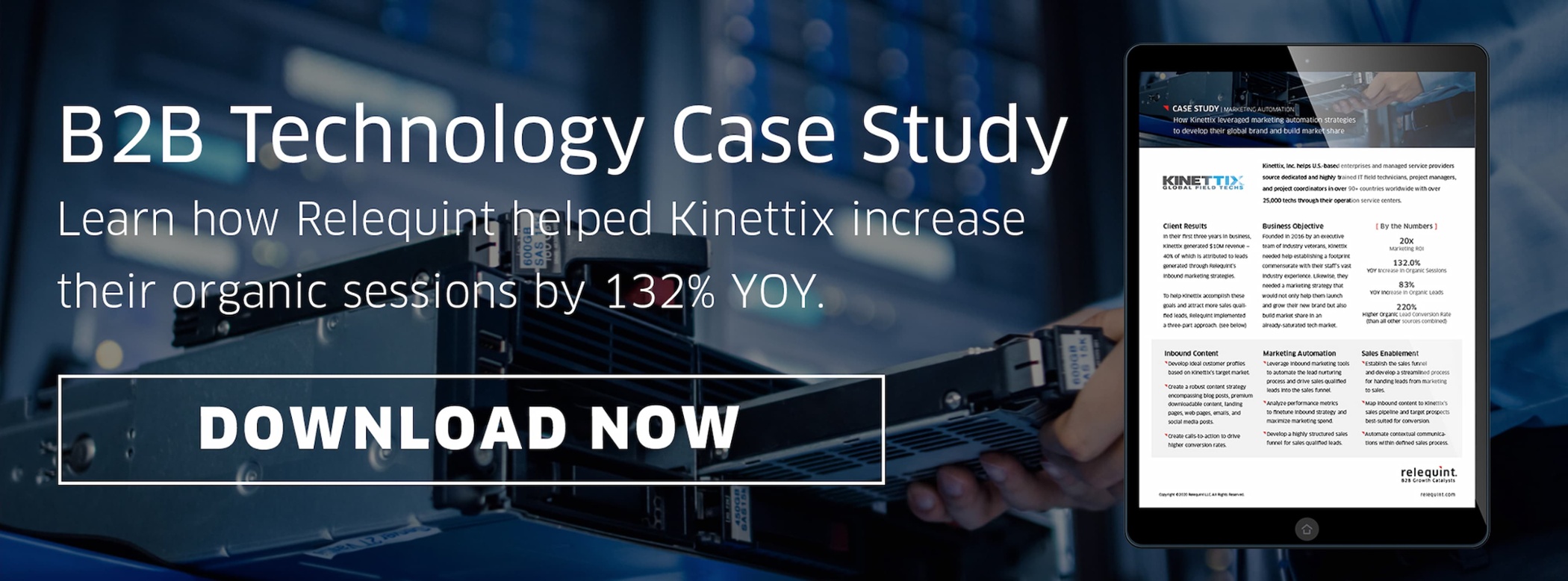 Creating personalized content is crucial to the success of your B2B technology company's marketing plan. With so many interactions through electronic means, personalization can transform what may seem like a cold, cookie-cutter message into an individual human exchange.
Creating personalized content is crucial to the success of your B2B technology company's marketing plan. With so many interactions through electronic means, personalization can transform what may seem like a cold, cookie-cutter message into an individual human exchange.
By simply basing your content on prospect behavior and engagement, you will be able to develop more sales qualified leads and even improve current customer retention. Below, you'll find out exactly why personalization should be a key component of any B2B marketing strategy.
The Benefits of Personalized Marketing
It Helps Speed Customers Through the Sales Funnel
When it comes to sales, B2B technology companies face unique challenges. Final purchasing decisions often involve input from multiple people at an organization, so B2B tech companies face much longer sales cycles. Similarly, the higher the cost of a service, the longer a prospect’s decision time could be before committing. This means a higher customer acquisition cost for the tech company, as well.
With personalization, you can target your prospects at the right time. Instead of starting at the top of the traditional sales funnel and working down, personalized content can be directed to the decision-maker based on where they are in their decision-making process.
For example, if the CEO of a company has taken action on your site that suggests they’ve identified their problem and are researching providers, you know that a case study and other data-driven information will be of more value to them than a marketing asset that is still in the awareness stage. Personalization can allow you to tap into where the prospect is in the purchasing decision and help guide them more swiftly through the sale funnel.
It Helps You Segment Your Audience
Even if your B2B technology company’s products or services appeal to a broad range of prospective customers, a one-size-fits-all approach to marketing will typically be much less efficient than targeted, personalized messages.
In fact, trying to use a one-shot approach may not resonate with anyone in your target audience, which can lead your prospects to ultimately dismiss your company. Luckily, with the help of marketing automation tools and personalization strategies, you can put your prospects and customers into specific audience segments to deliver content that speaks to their unique needs at their current stage in the buyer’s journey.
There are multiple ways that you can segment your audience to help create more personalized content. One way to classify an audience is by the characteristics of the company or firm they work in. In that group, you can put prospects from industries with similar company sizes, business locations, and even job titles. Another way that you can approach segmentation is by tiering your audience based on their company’s revenue-generation potential. Finally, you might consider separating your audience based on what they want and need from your company compared to where they currently are in the sales cycle.
It Improves Lead Generation
One of the most compelling reasons for B2B technology companies to use personalization in their marketing plan is because it can help to improve lead generation. Personalization goes a long way to building trust both with your company and your brand. When prospects feel like you understand their wants and needs as well as where they are in their purchasing decision, they are more likely to engage with your company.
Driving traffic to your site is key to help grow your company and it is best to have leads that are more likely to result in actual conversions. Personalization can help you achieve that.
How to Personalize Your B2B Marketing Strategy
So, how can your company start personalizing your marketing message to generate more sales qualified leads?
For starters, make sure you have engaging content for every stage of the sales funnel. If you don’t, spend some time creating whitepapers, case studies, and guides that will not only address your prospects’ unique concerns but also establish thought leadership and improve SEO.
Next, map your content to the stages of the sales funnel and analyze your current customers and prospects in order to determine which stage they’re in. Once you have this information, you can use marketing automation tools like HubSpot, Pardot, and Marketo to automatically deliver the right message to the right person at the right point in their journey. In turn, these systems can help you implement more personalized marketing while helping to free up staff's time for other marketing endeavors.
To learn more about how personalized marketing strategies and marketing automation tools can create a structured path to growth, download our B2B technology case study.![]()







 By
By 
